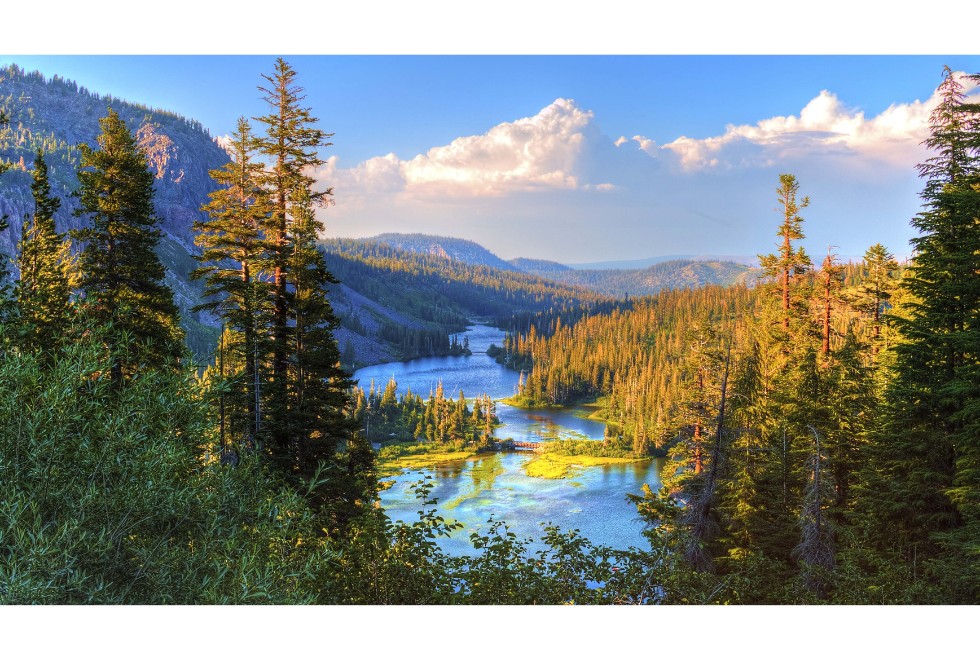
The outcome of the November 5 election will have significant implications for clean water, the climate, and environmental justice. The protection of clean water, once a broadly supported issue, has over time become highly politicized. This could not have been made more clear than at the Congressional hearing held on September 11, 2024 by the U.S. House of Representatives Transportation and Infrastructure Committee, entitled “Waters of the United States Implementation Post-Sackett Decision: Experiences and Perspectives.”
Opening remarks by the Water Resources and Environment Subcommittee Chairman David Rouzer (R-NC) set the tone of the hearing. He stated the Clean Water Act “was never envisioned for the federal government to have control over every ditch and mud puddle”, and it is “unnecessarily hampering our economy and private property rights” and putting “meaningless delays” on important development projects. Similar sentiments were echoed by fellow Republican congressmembers and the three Republican-invited witnesses, representing the Alaska Department of Environmental Conservation, the American Farm Bureau Federation, and the National Association of Home Builders.
The U.S. House majority used their platform to echo the same old arguments used to criticize the Clean Water Act, the Environmental Protection Agency’s authority, and sound scientific evidence for protecting wetlands, streams and other water bodies that impact the rivers, lakes, and bays downstream.
But It Wasn’t Always This Way
In 1972, Congress passed the Clean Water Act with a bipartisan majority in both houses. The Senate voted 52 to 12 to override President Nixon’s veto of the Act, of which 17 of the votes in favor were Republicans. The House also voted in favor of the Clean Water Act 247 to 23, of which 96 of the votes in favor were from Republicans.
Regardless of political party, Congress agreed with the Clean Water Act’s primary objective “to restore and maintain the chemical, physical and biological integrity of the nation’s waters.” The Clean Water Act, passed with support of what would become Clean Water Action, became one of the nation’s foundational environmental laws, protecting our lakes, rivers, and other surface water bodies by regulating the amount of pollution that flows into them. Since its passage, we have seen significant progress in water quality throughout the country. Its successes have underscored the importance of Federal-level programs to control pollution at its source.
Unfortunately, over the last two decades, extreme and pro-polluter interests have crept in and taken hold. Disregarding overwhelming scientific evidence, developers, fossil fuel interests, and other industries have sought to chip away at the Clean Water Act, especially when it comes to which waters it protects and regulates.
The Sackett Decision
As a victory for polluters, just over a year ago, the U.S. Supreme Court issued a significant setback over what waters are protected under the Clean Water Act. In May 2023, the U.S. Supreme Court delivered its Sackett v. EPA decision, narrowing protections for more than half of the nation’s wetlands and for thousands of miles of streams throughout the country.
The decision weakened Clean Water Act protections to only those wetlands that have a continuous surface connection and deemed that protections only apply to streams that are considered to be relatively permanent waters. This decision ignores the fact that many wetlands can be connected beneath the surface, and ephemeral and intermittent streams can be invaluable water resources, especially in dry and arid states.
This ruling not only threatens vital wildlife habitats and ecosystem services, like flood mitigation, but also puts the drinking water of tens of millions of people at risk. The Sackett decision opened the doors for real estate developers, fossil fuel and mining interests, industrial agriculture, and other industries to destroy these valuable resources. Overall, our priority should be clean drinking water for our communities, not easing permitting requirements and increasing profits for polluters.
Looking Towards the Future
Since the Sackett decision, filling the gap from the loss of these federal protections has fallen largely on individual states. A fourth, but largely overshadowed, Democratic-invited witness during the hearing brought a different perspective. Nicole Rowan, who is Director Water Quality Control Division at the Colorado Department of Public Health and Environment, spoke of the recent successful passage of House Bill 1379 in May 2024. Colorado became the first state to pass legislation restoring protections to wetlands and streams that were lost because of the Sackett decision. She described the extensive effort and resources that went into getting the bill passed, including 45 stakeholder meetings with representatives from across industries.
Clean Water Action was closely involved in the development of Colorado’s bill (details in our blog here). A culmination of a year of advocacy, this example shines a light on what is possible at the state level to improve protections of the wetlands and streams that were left vulnerable in the wake of the Sackett decision.
However, relying on state-level protections alone could lead to inconsistencies and gaps that may leave many of our streams and wetlands at risk. Water does not abide by state boundaries and upstream protections greatly impact downstream waterways and drinking water sources. It can also be resource intensive and expensive for individual states to implement and administer. For these reasons, we must urge our U.S. Representatives to support a national congressional fix to the Clean Water Act that ensures the uniform, permanent protection of all vulnerable streams and wetlands across the country. The Clean Water Act of 2023, which was cosponsored by over 100 U.S. House of Representatives Democrats, would reverse the Sackett decision and reinstate the Clean Water Act protections for wetlands and streams that lost federal safeguards.
November’s Election
The November 5 election will be a critical chance to improve Clean Water Act protections. The difference between the proposed administrations could not be more clear.
On one hand, we have the Trump administration that consistently sided with polluters, finalized the “Dirty Water Rule”, rolled back numerous other environmental and water protections, and appointed the Supreme Court justices responsible for the dangerous Sackett decision. This is just a taste of what is to come if this administration is elected once again.
On the other hand, we have the Harris/Walz campaign that would support historic levels of funding for climate change and water infrastructure, protect our communities from polluters, push for effective ways to protect our waters and drinking water, and advocate for everyone’s right to clean air, clean water, and a healthy environment. This is why Clean Water Action has endorsed Kamala Harris for President and Tim Walz for Vice President this November.
The presidential candidacy isn’t our only concern: the races in each state will decide key seats in the House of Representatives and the Senate. These elections will determine which party holds the majority in each chamber and will have major consequences in shaping clean water policies for years to come.
Ultimately, the outcome of this year's election is crucial to finding durable, practical solutions to protect vulnerable wetlands and streams and keep pollution out of drinking water sources. When you head to the polls, make sure you’re voting for candidates that will prioritize strong water protections, environmental justice, and clean drinking water for all.



